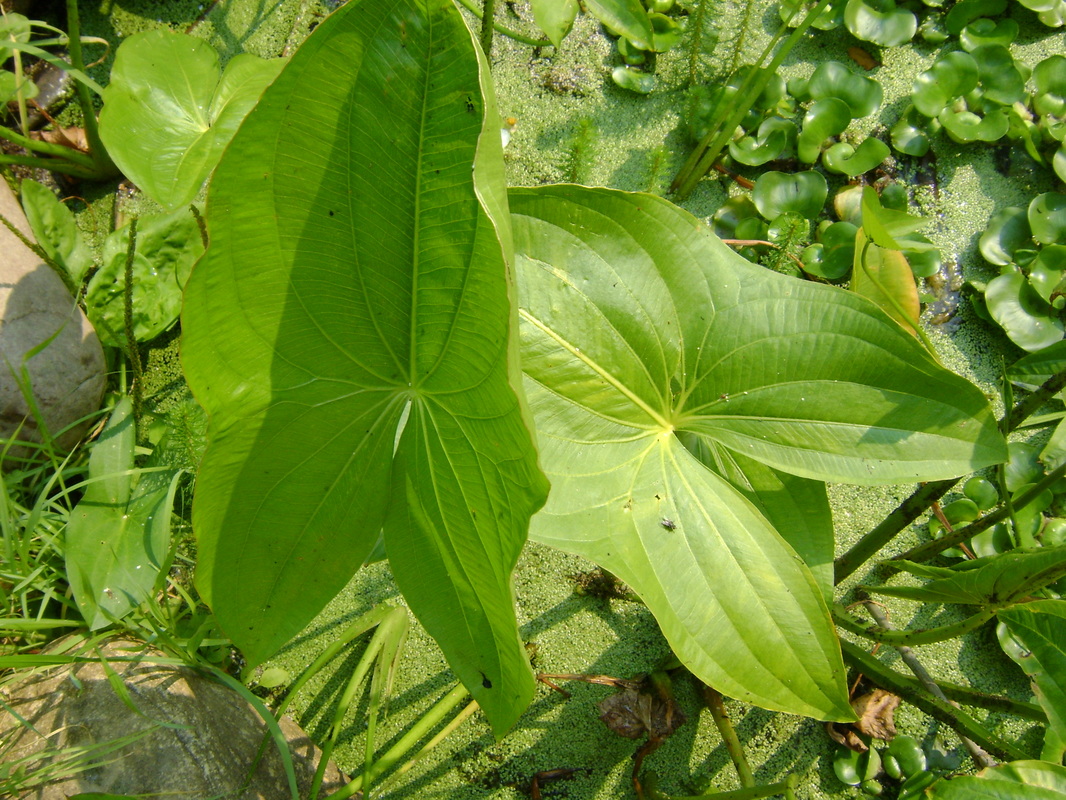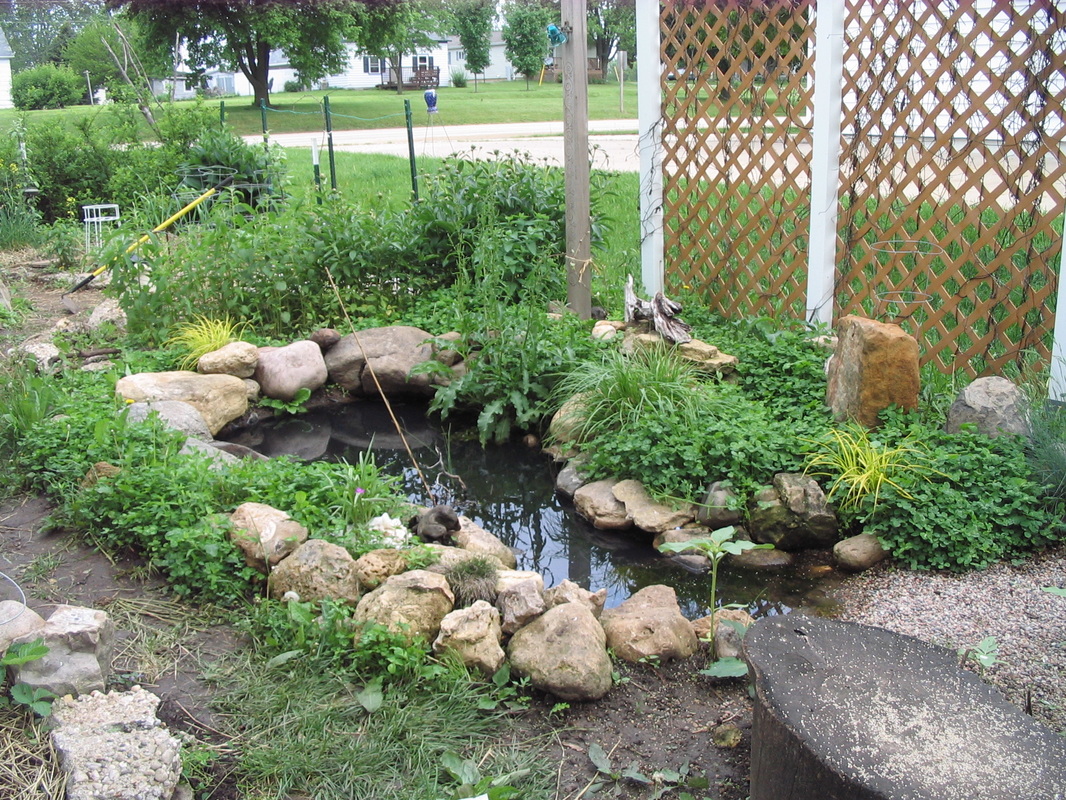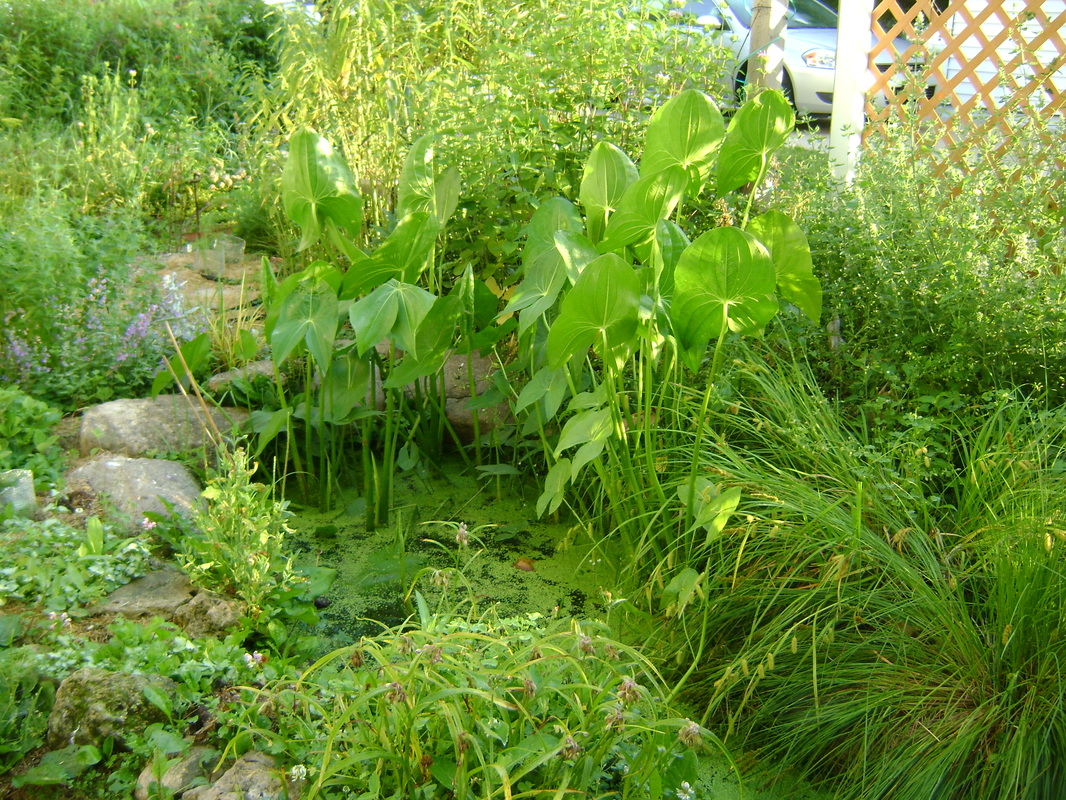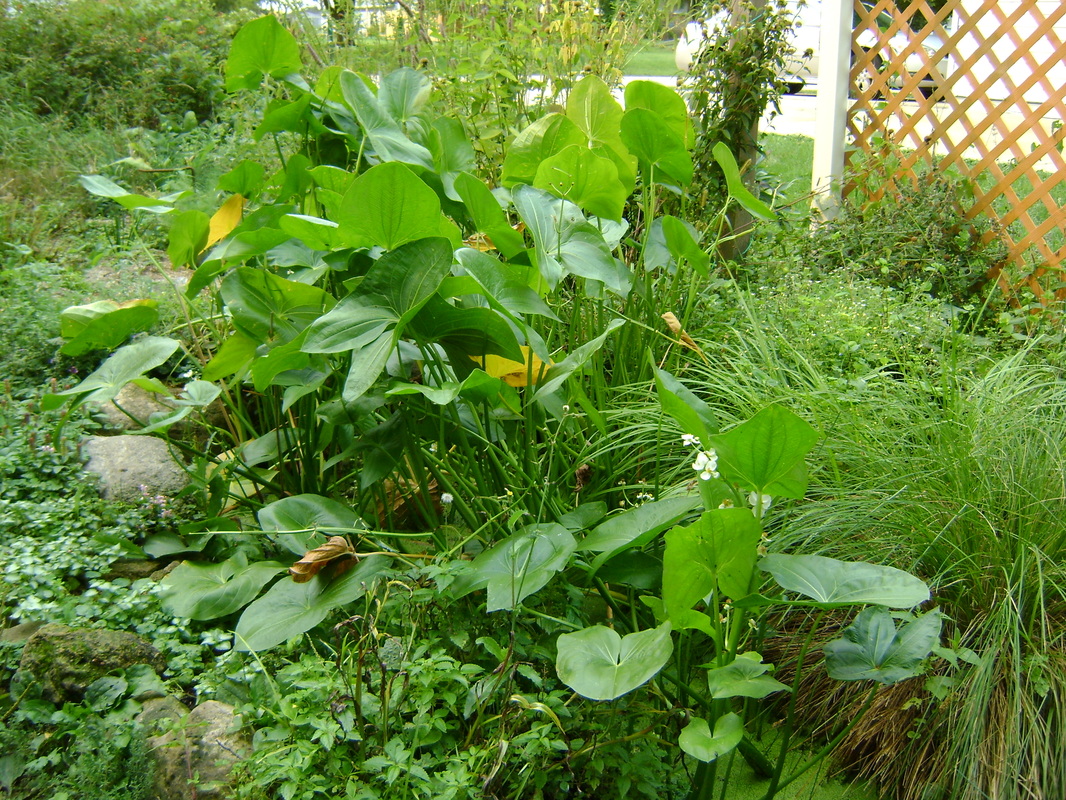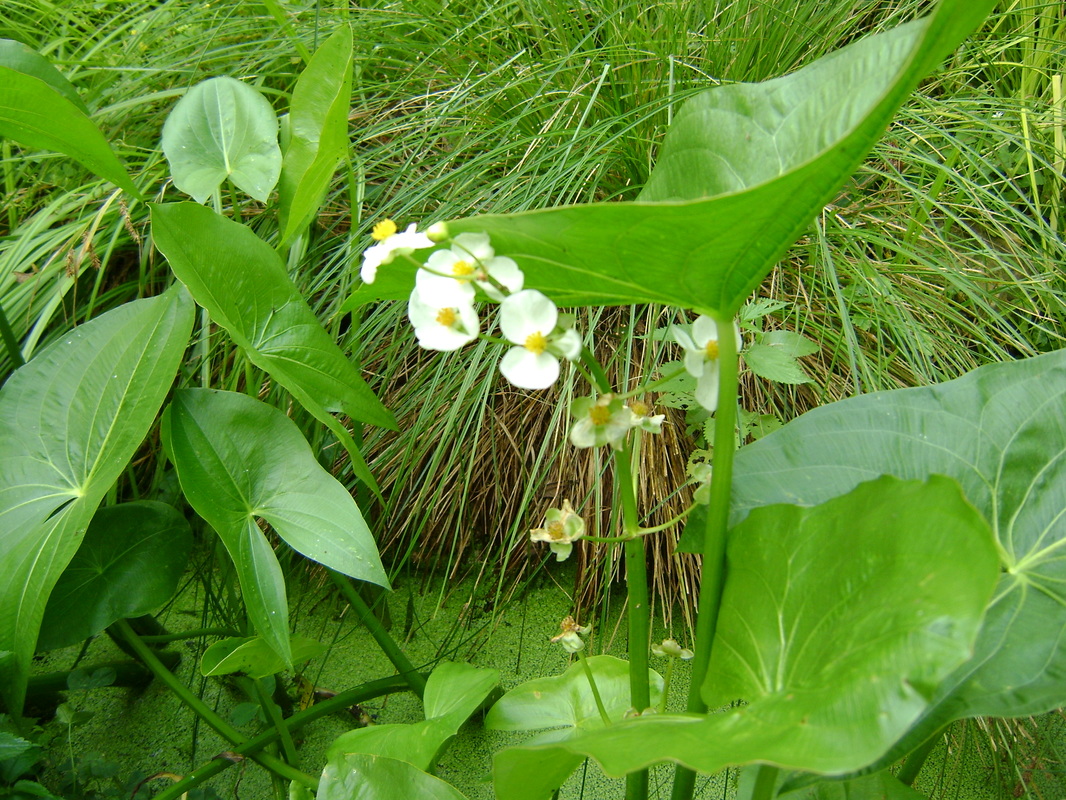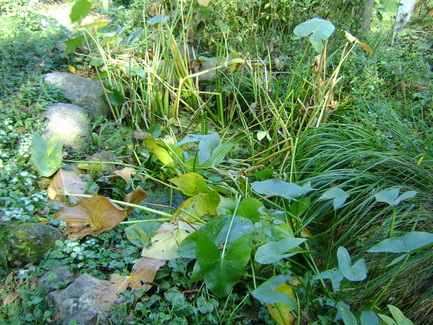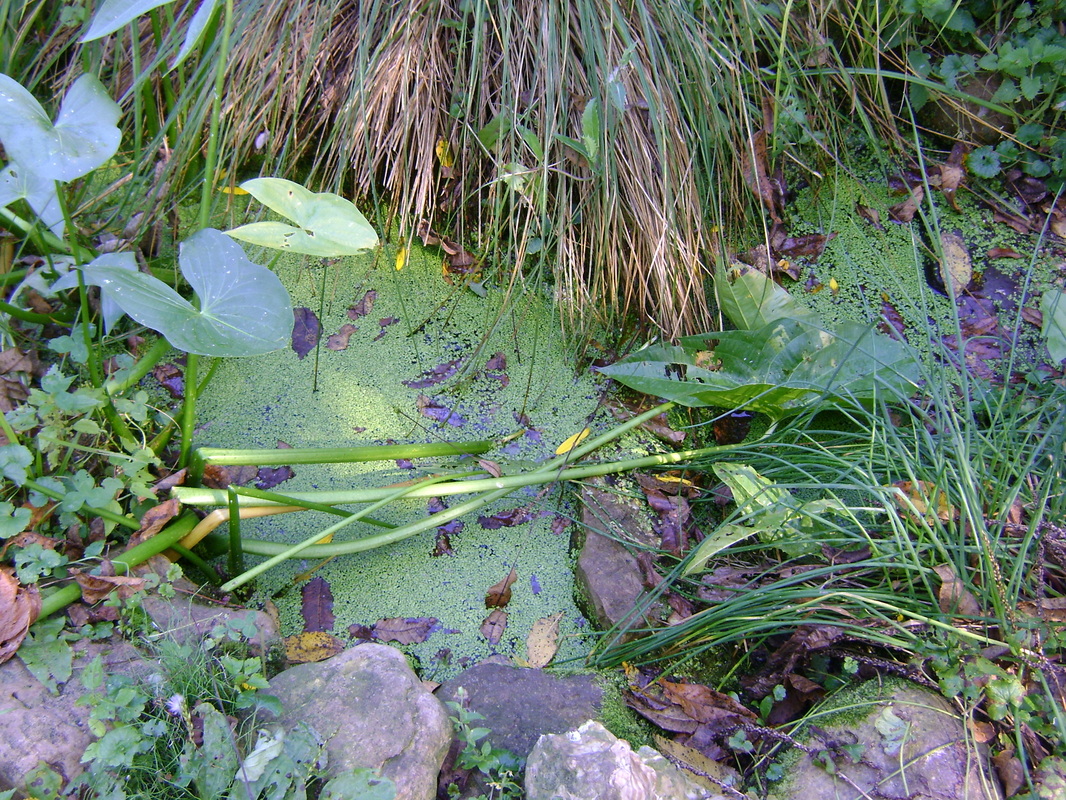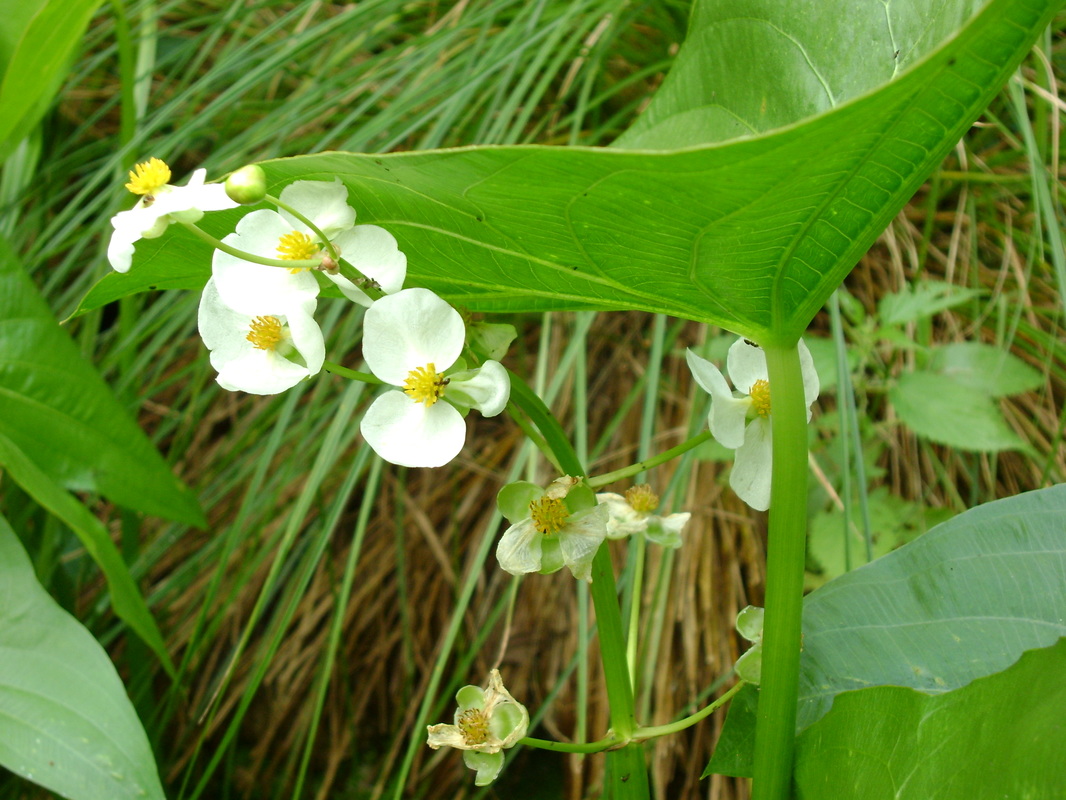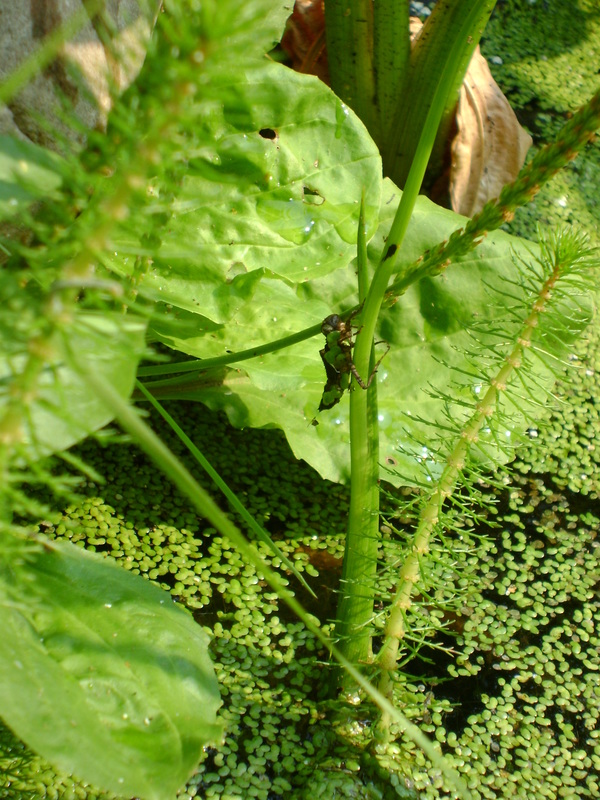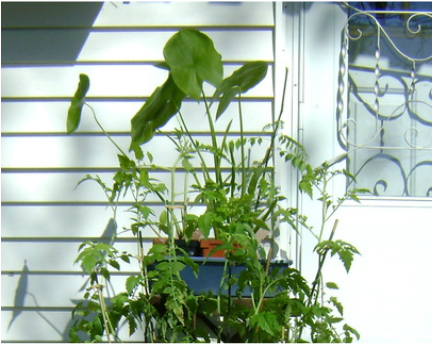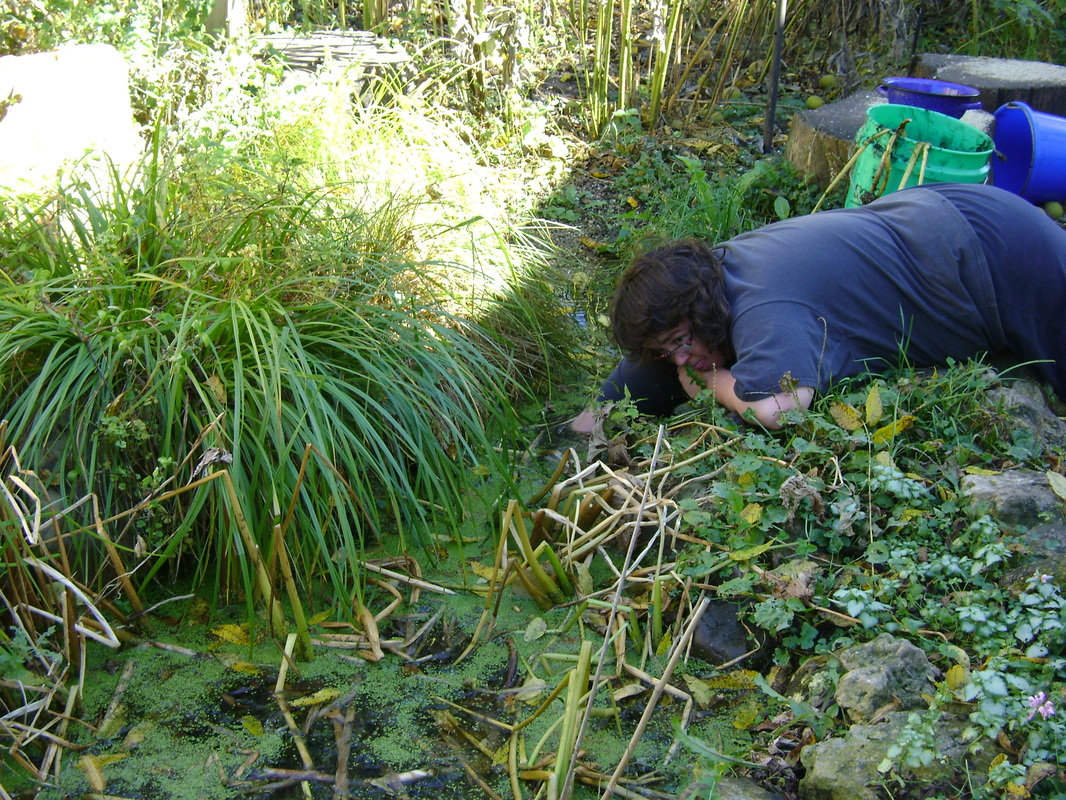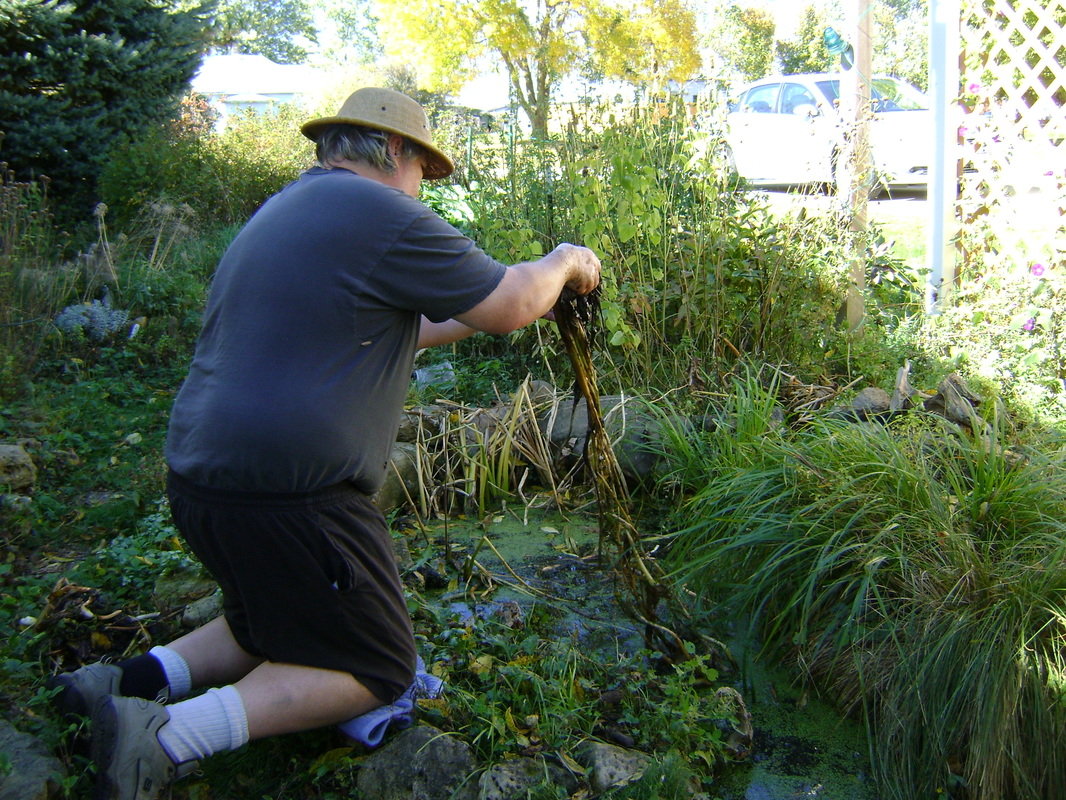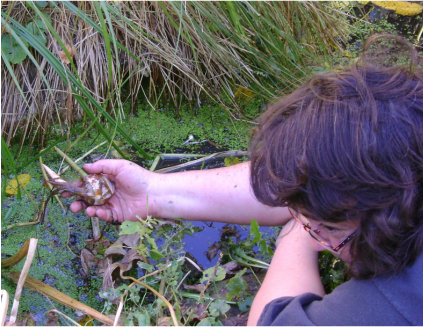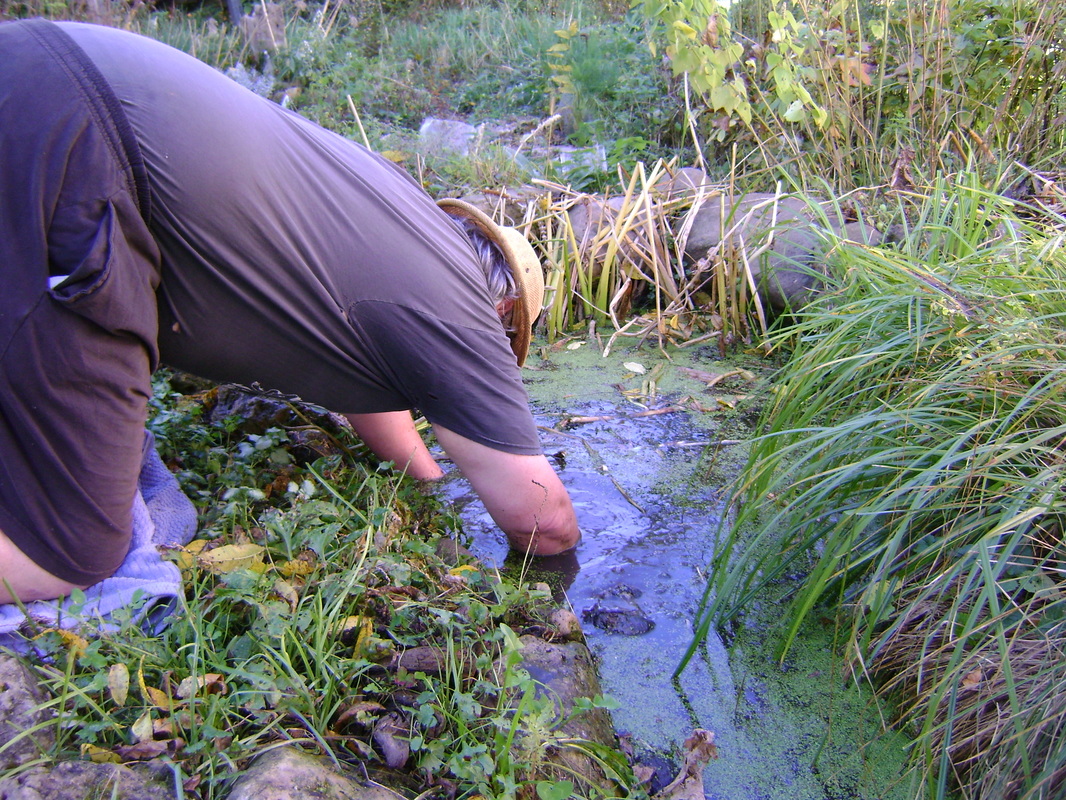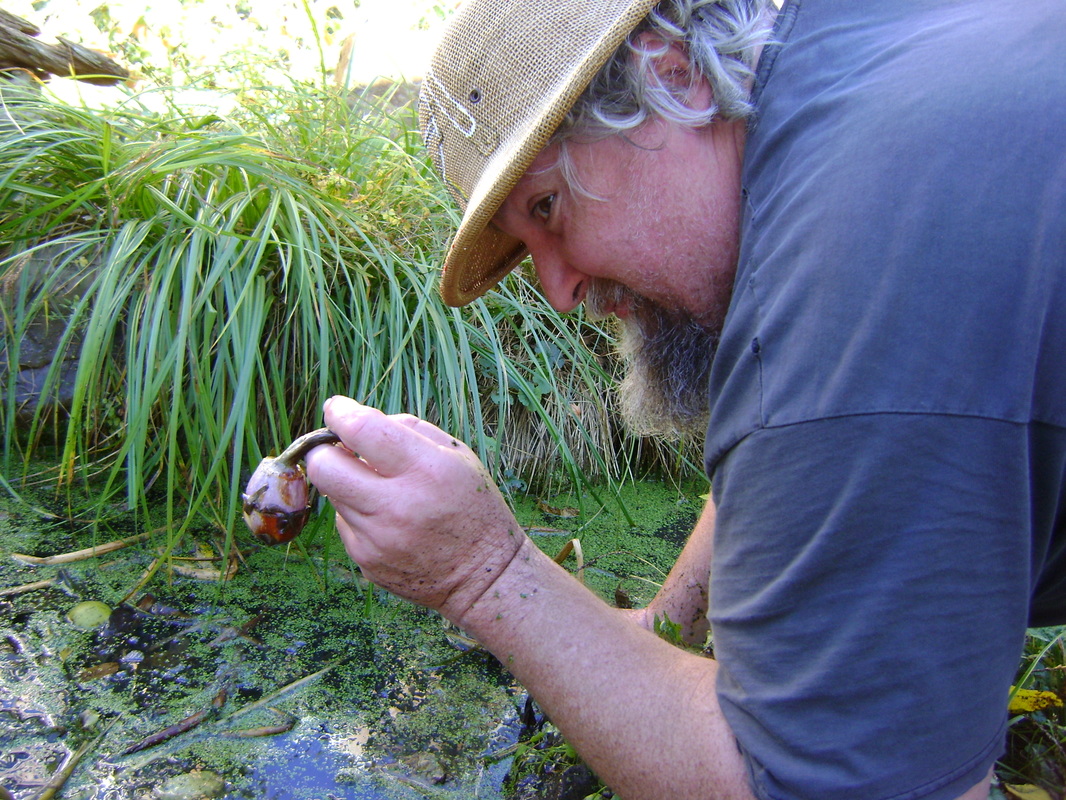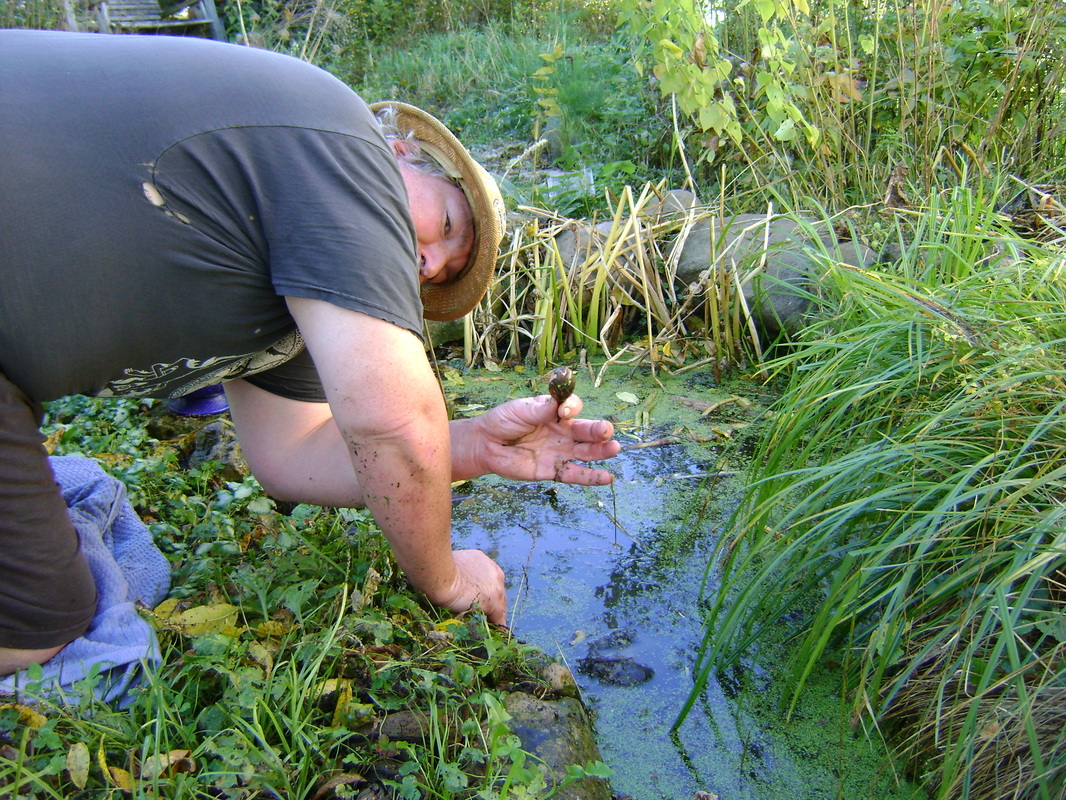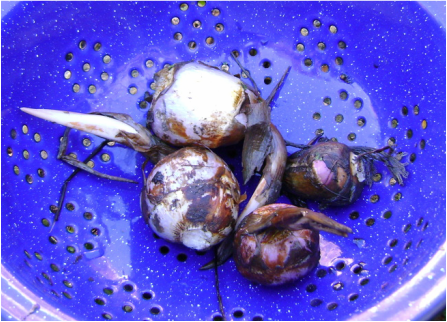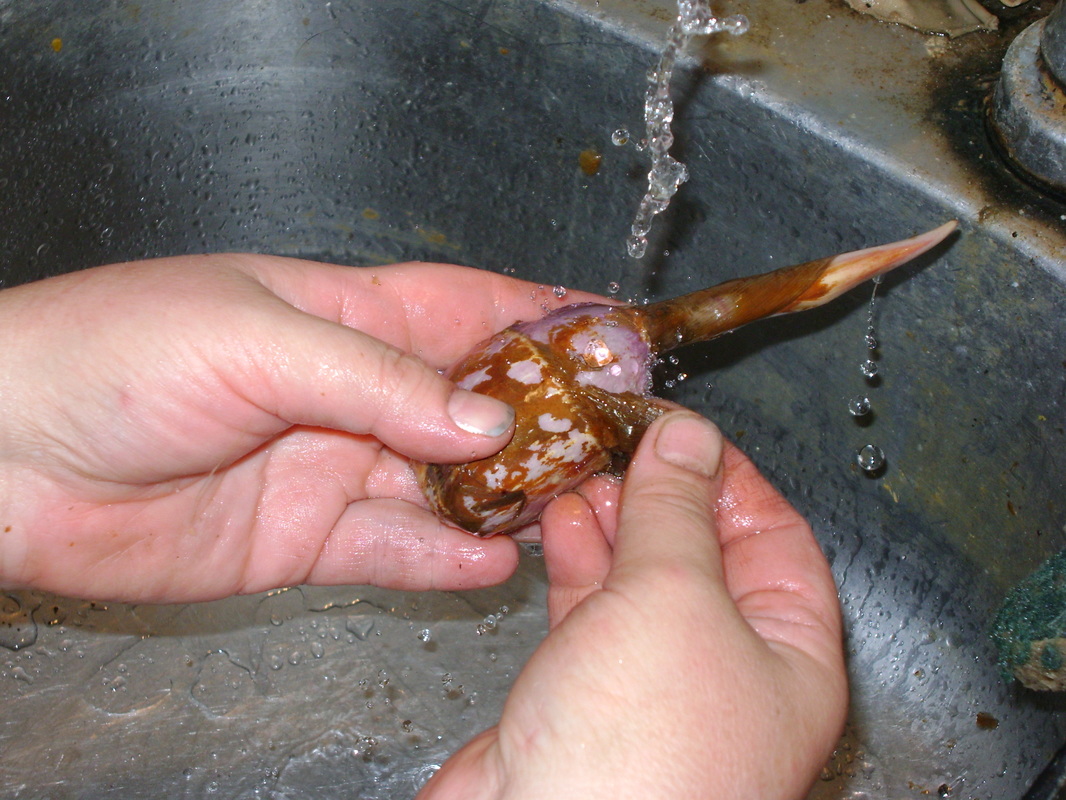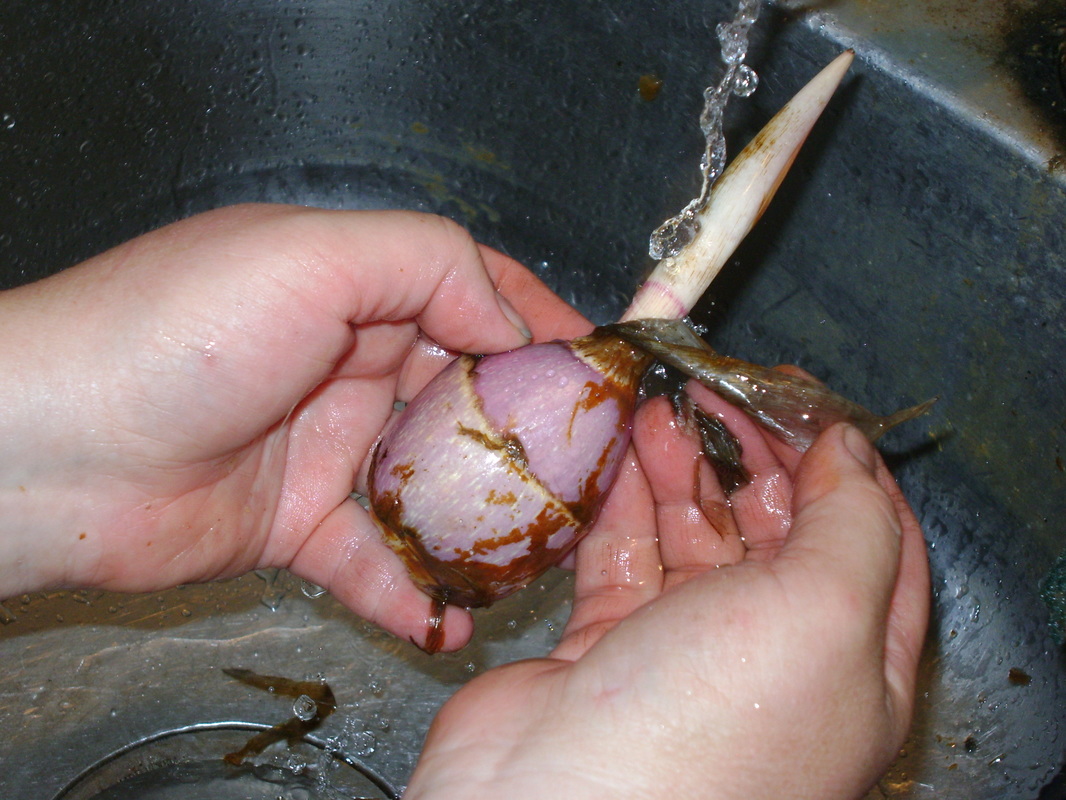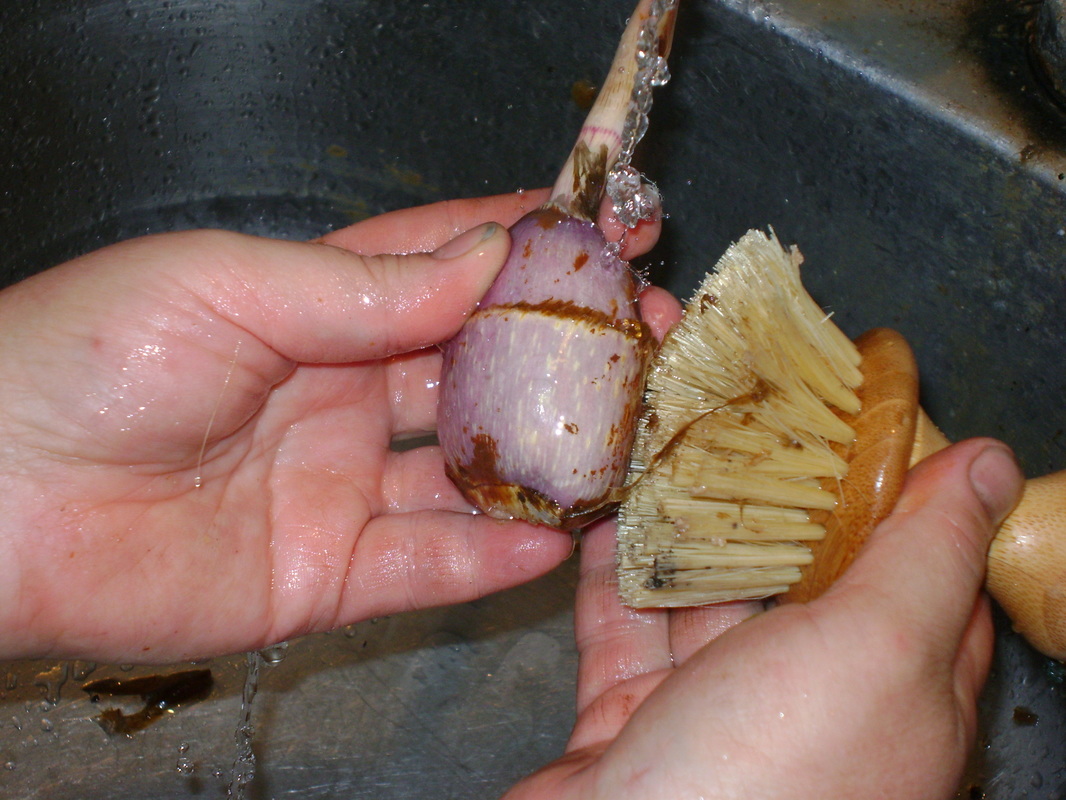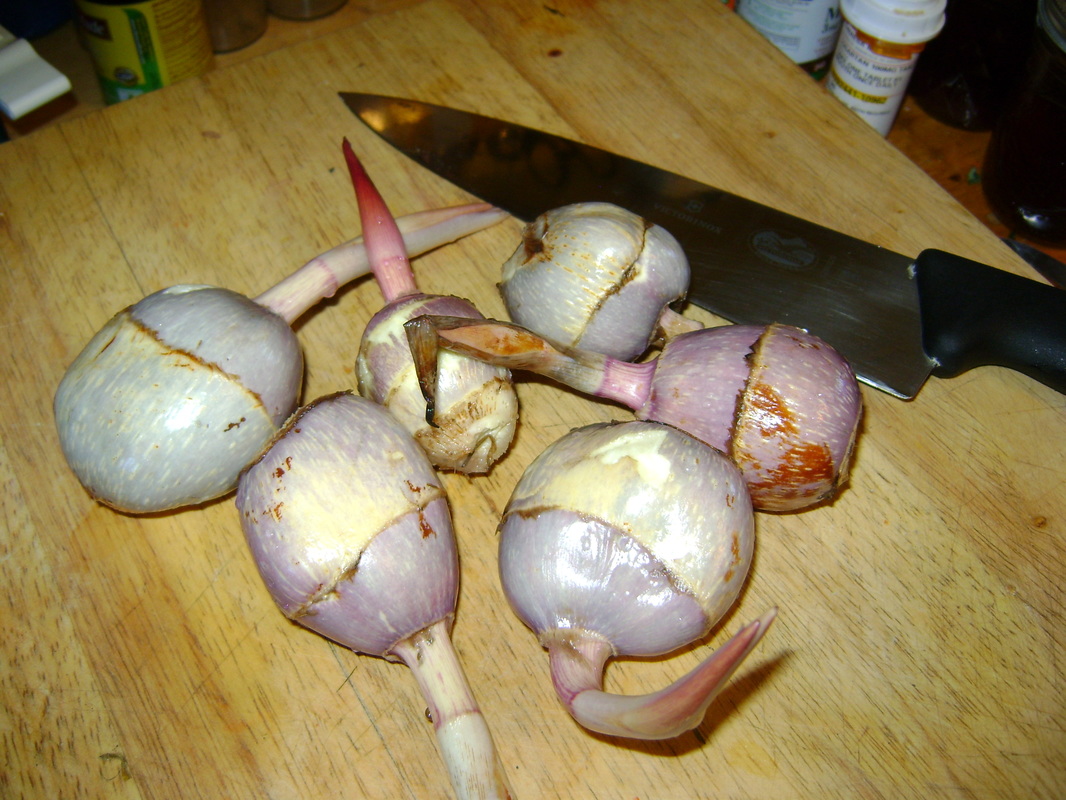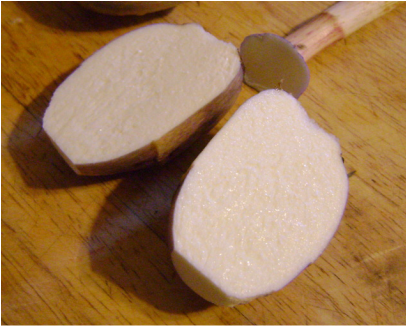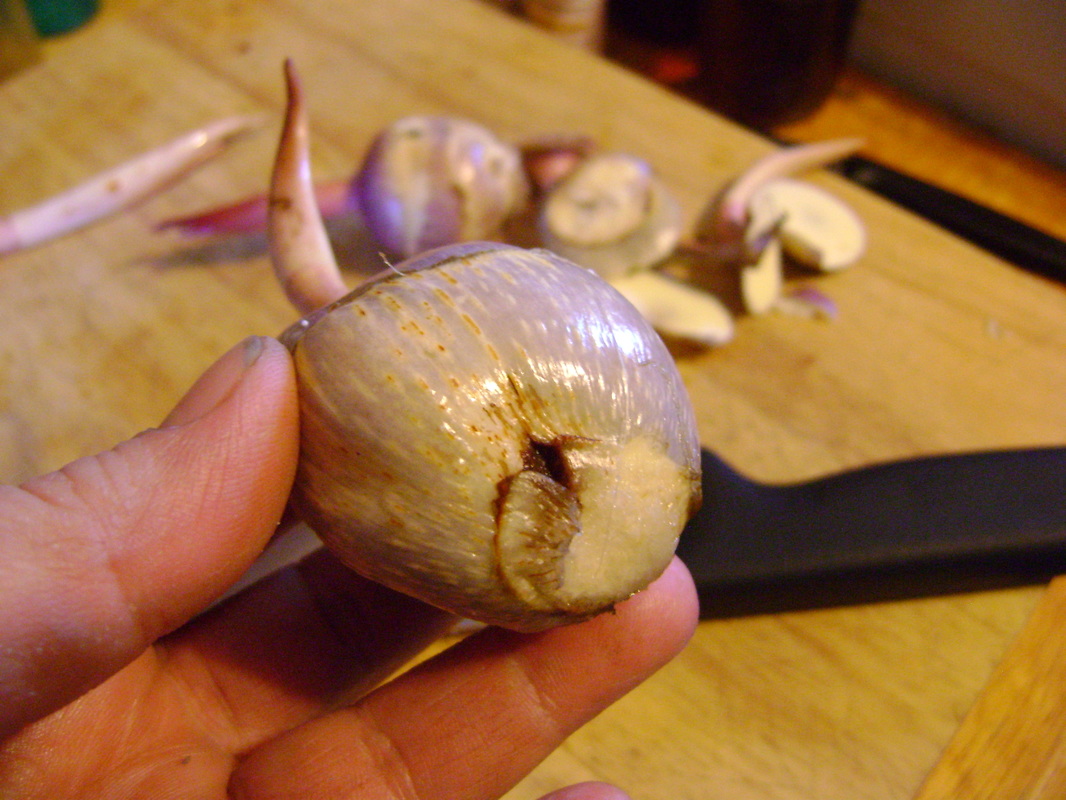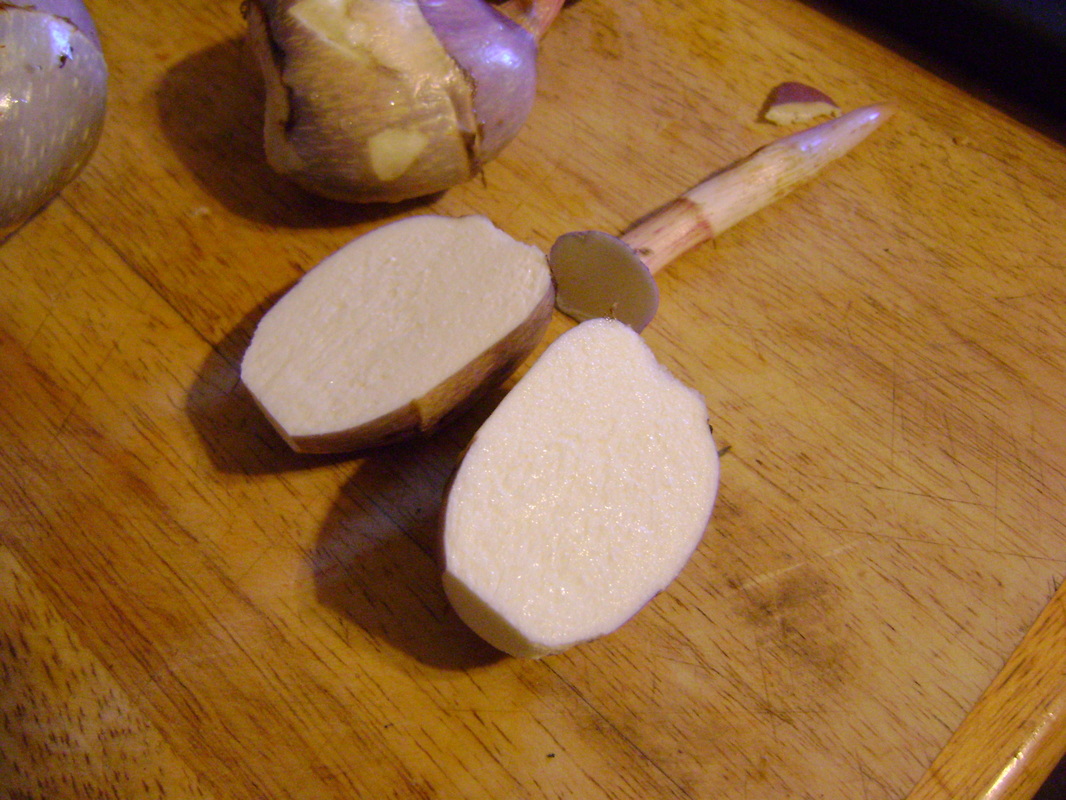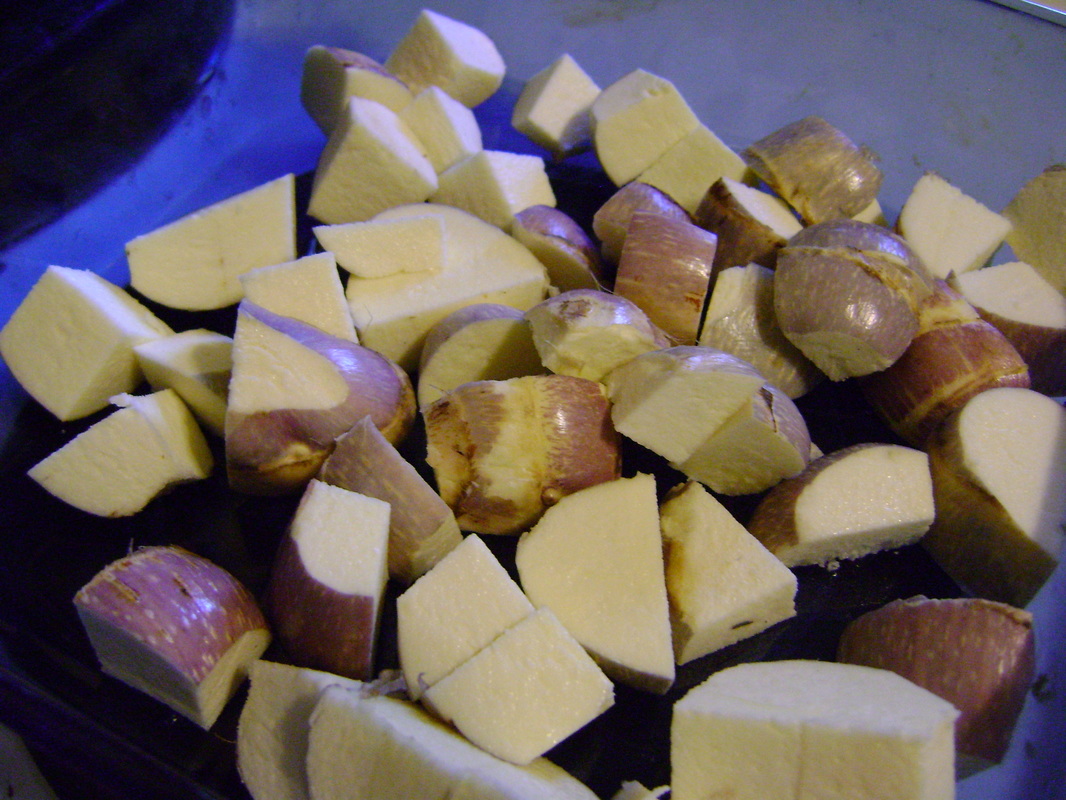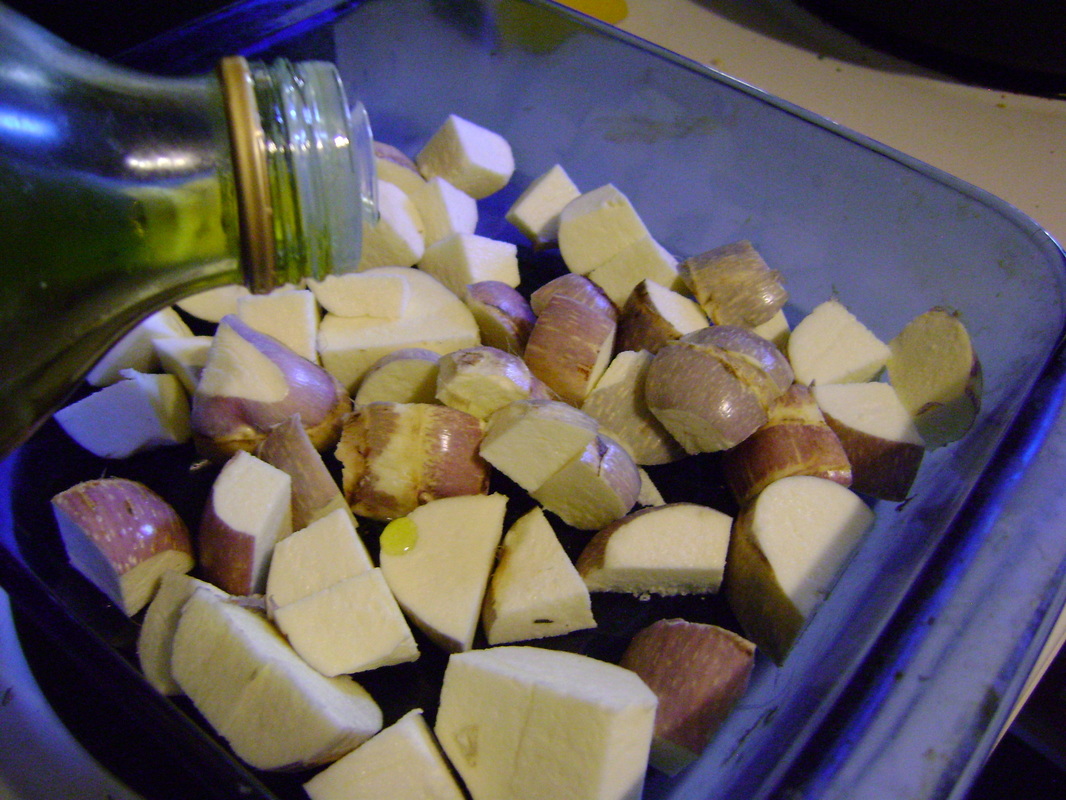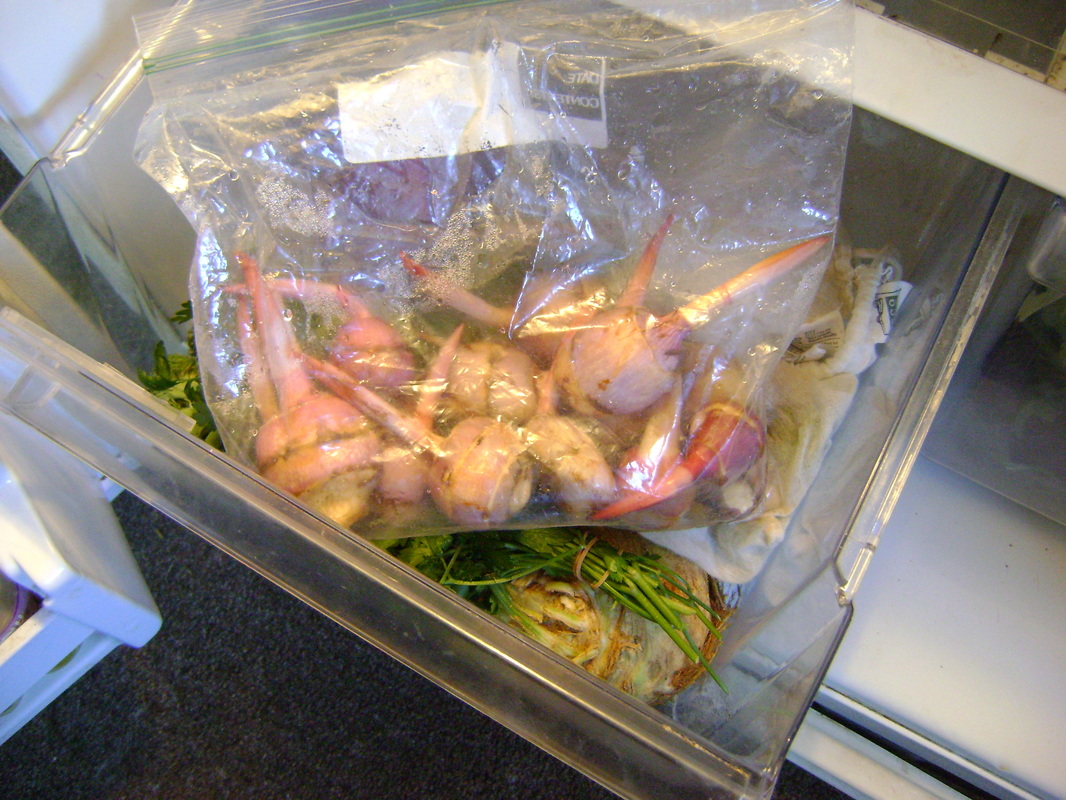Perennial Water Vegetable:
|
GROWING ARROWHEAD IN OUR POND:
How to plant Arrowhead:
|
Arrowhead takes over the pond in 2015:
|
Overwintering:
|
|
Growing challenges:
|
|
Sources:
I've bought my arrowhead from:
You can see the arrowhead at the top in the photo to the left, in the blue tub, which has a couple inches of water in it. I received the tubers in the mail in the winter, so grew them in soil in pots that sat in the water, until I could transplant them in the Spring.
|
HARVESTING ARROWHEAD:
|
1. Harvest the plants in the Fall, when they have died back. This photo is from 10-11-2015. You can see that all the arrowhead leaves are gone, so that all that remains are the brown stems on the left, leaning against the rocks.
|
2. According to what I've read, Native American women harvested arrowhead by walking into the frigid water and using their bare feet to dig around in the mud for the tubers. Brrr. We get to cheat, since our pond is so small. We can lay on the edge and dig around with just our hands.
|
CLEANING ARROWHEAD:
1. To clean the tubers, begin by rinsing them in a bowl of water:
COOKING- ROASTED ARROWHEAD FRENCH FRIES:
|
5. The arrowhead will brown a bit on the outside and get crunchy. The inside is light and airy, and they are like eating a french fry that isn't oily. (This photo is from our second batch, when we added pepper.)
|
6. We ate ours arrowhead "fries" as the side dish for some burgers. They were great dipped in our homemade ketchup.
|
THE SAD PART...
We only got two meals out of our harvest from our entire pond... We loved the arrowhead so much that we are contemplating building another pond or maybe taking up hydroponics so we can grow more. It's an addiction.
RETURN to the PERENNIAL VEGETABLES page.


